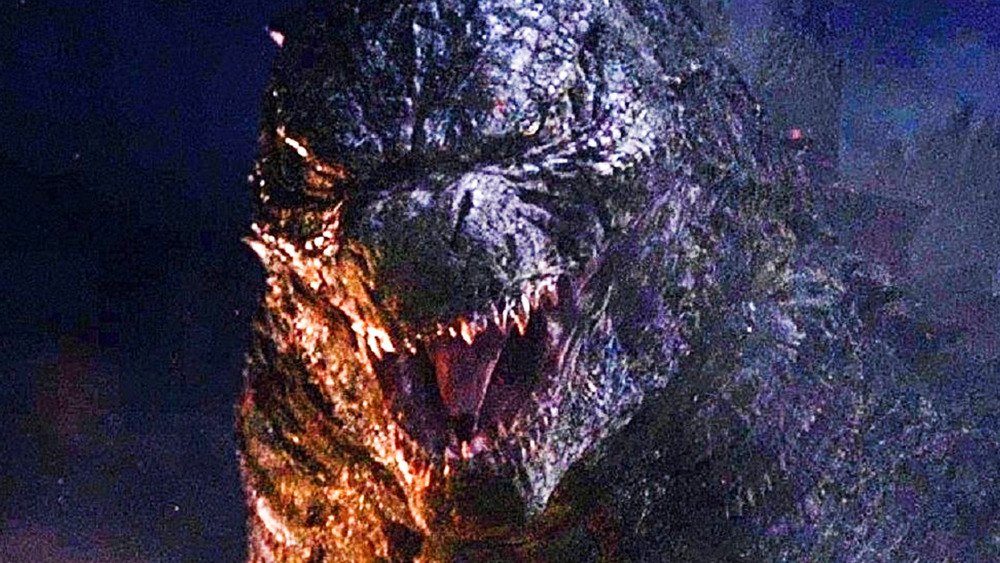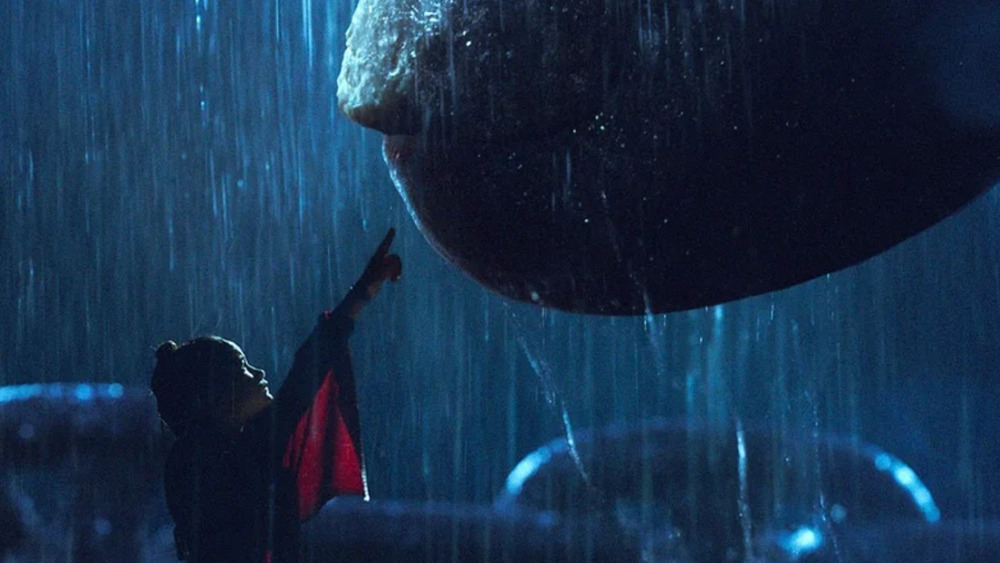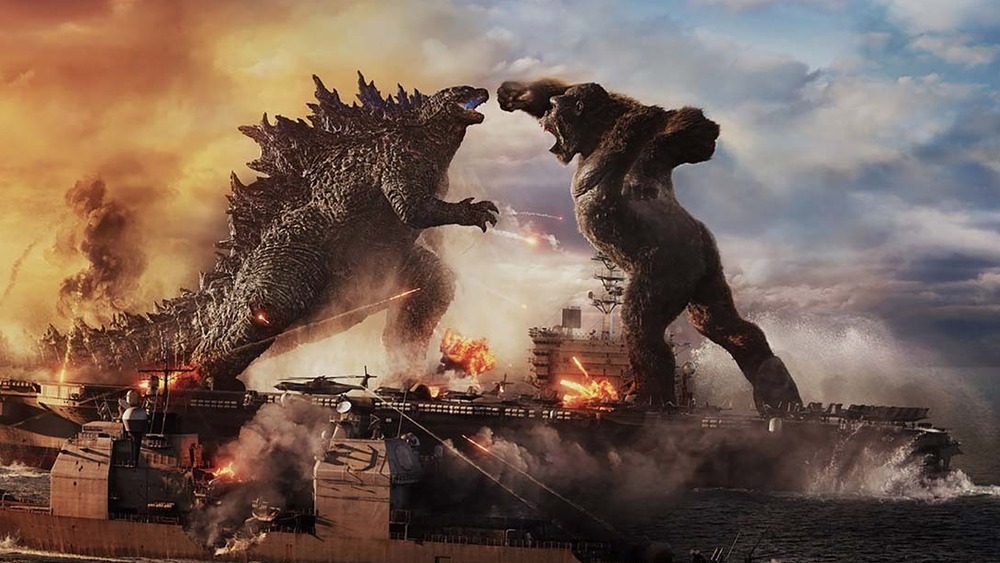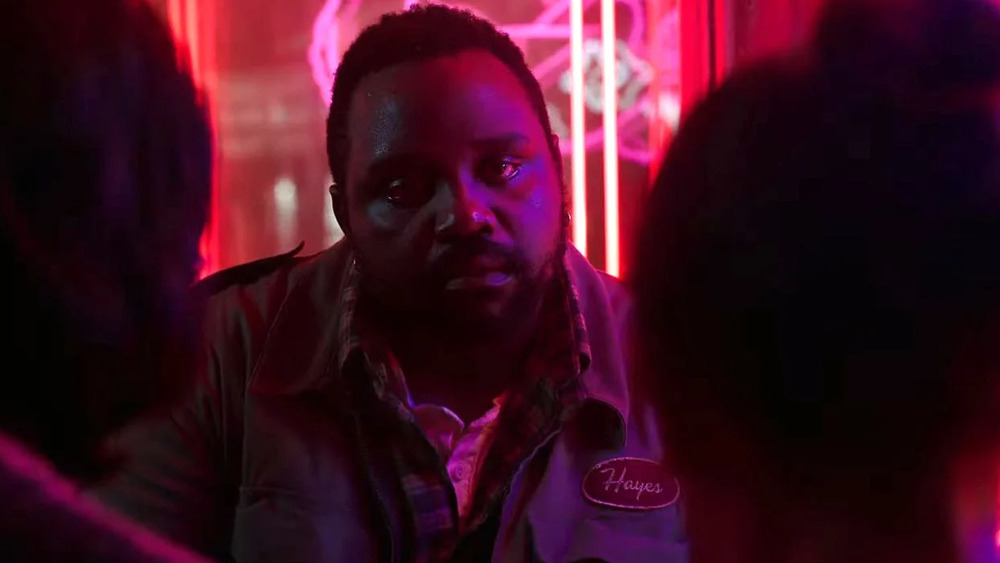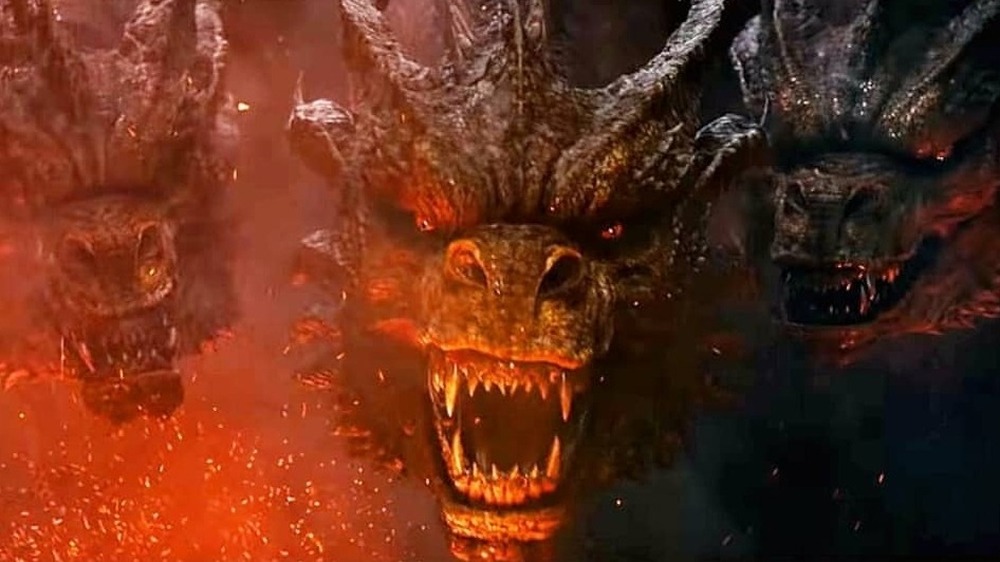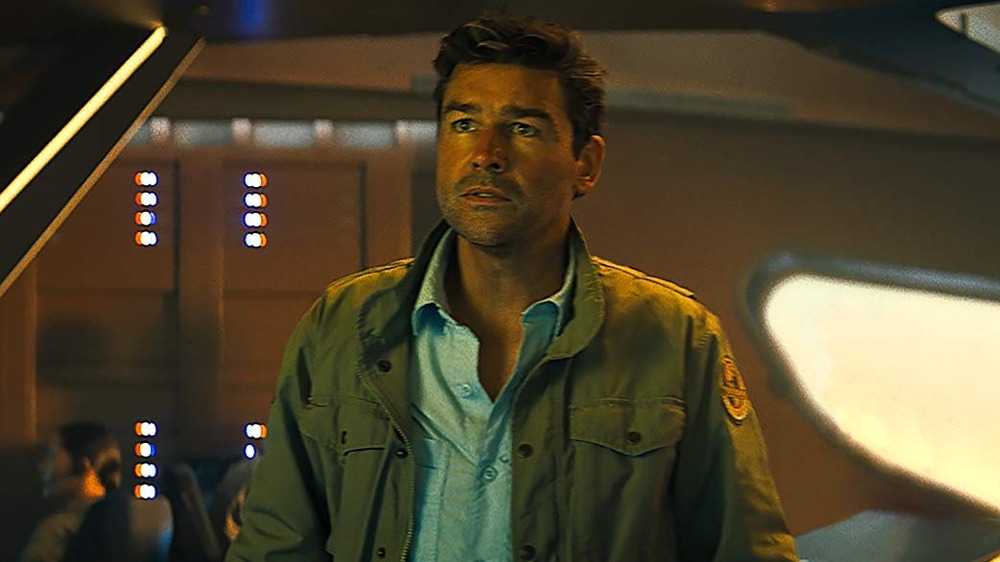Lines In Godzilla Vs. Kong With More Meaning Than You Realize
If you click a link and buy a product or service from a merchant, we may be paid an affiliate commission.
Contains spoilers for Godzilla vs. Kong
It's fair to say that the main attraction for Godzilla vs. Kong is not the dialogue or the human characters. Whether streaming on HBO Max or watching in theaters, when it comes to Legendary Entertainment's MonsterVerse, it's more about seeing prehistoric giants bodyslam each other into skyscrapers and national monuments. Still, the supporting human roles are an important facet of the monster movie formula. Their contributions may not be as exciting as the all-out behemoth brawls, but they do provide important context to the carnage.
Humanity's role in this whole affair cannot be understated. They carry the expositional side of the film, explaining how a world with a Hollow Earth and giant monsters even works. As a result, there's actually plenty of dialogue throughout Godzilla vs. Kong that calls back to previous events, references older movies, or foreshadows events to come. At first, many of these lines appear to be innocuous. Upon closer inspection, however, it's apparent that they bear more meaning than you might realize. These lines in Godzilla vs. Kong meant more than you may have realized at first.
Across the sea there's a girl, she's waiting for me
The first impactful line from Godzilla vs. Kong isn't even dialogue; it's from the lyrics to the song "Over The Mountain Across The Sea" by Bobby Vinton. The slow, soothing song plays over the sight of King Kong going about his morning routine on Skull Island. "Over the mountain, across the sea. There is a girl. She's waiting for me." The song itself mainly serves to set the relaxed tone of the movie's opening scene. However, it's also a callback to King Kong's origins. Until Legendary Entertainment started featuring Kong in its burgeoning MonsterVerse, the character was most famous for King Kong's original 1933 movie and its remakes. In most versions of the classic King Kong story, Kong has a protective fascination with the American women he encounters.
Additionally, this sets up two other elements of the movie. First, it references the connection Kong has with Jia (Kaylee Hottle), the last remaining member of Skull Island's Iwi Natives. Second, it foreshadows the idea that Kong may find others of his kind far away in the bowels of the Hollow Earth. No matter the context, the song's lyrics are an important characterization tool, painting Kong as a lonely figure and foreshadowing his desire for a family later on.
A weapon that can compete with Godzilla
Things begin picking up when Godzilla destroys the laboratories at Apex Cybernetics, seemingly without provocation. Apex CEO Walt Simmons (Demián Bichir) responds by recruiting Hollow Earth expert Dr. Nathan Lind (Alexander Skarsgård) to help him access the planet's uncharted depths. He reveals that the Hollow Earth contains an energy source capable of creating an anti-Godzilla weapon. This is one of the first hints we get at the true final conflict in Godzilla vs. Kong, and it is also no coincidence that this is the same scene in which we are introduced to Apex's Chief Technology Officer, Ren Serizawa (Shun Oguri). Within the MonsterVerse, Ren is the son of Ishiro Serizawa, the Monarch Scientist portrayed by Ken Watanabe in prior films. However, that isn't the last of the Serizawas, and Ren isn't the only Serizawa in Godzilla history to develop anti-Godzilla technology.
In the original 1954 Godzilla, Dr. Daisuke Serizawa is the scientist responsible for the creation of the Oxygen Destroyer which inevitably puts an end to Godzilla's rampage. In the MonsterVerse, the Oxygen Destroyer had already been developed by the U.S. Government and saw use in Godzilla: King of the Monsters. The introduction of this new Serizawa, along with the revelation of more anti-Godzilla weaponry, is just another hint pointing towards Apex developing a new way to fight Titans.
Yeah, but it's in a gun holster
Early on in the movie we are reintroduced to Madison Russell (Millie Bobby Brown), the daughter of Titan experts Emma and Mark Russell. She drags her friend Josh (Julian Dennison) to team up with anti-Apex conspiracy theorist Bernie Hayes (Brian Tyree Henry), who keeps a flask of expensive Japanese whiskey in a gun holster under his jacket. The three go on to infiltrate and investigate Apex's inner sanctums based on the idea that the company must be provoking Godzilla.
The whiskey comes back into play when it is revealed that Apex is developing Mechagodzilla, a robotic knockoff of the genuine article. After Mechagodzilla goes haywire and begins posing a threat to the human population, the crew intentionally spills Hayes' whiskey on Mechagodzilla's remote computer system, stunning the cybernetic Titan and allowing Godzilla and Kong to gain the upper hand in a two-on-one battle. The holster in particular is a foreshadow to the fact that the whiskey is actually a weapon. Not only that, it's one of the most crucial weapons in their efforts to dismantle Apex's anti-Titan operations and destroy Mechagodzilla.
It could be a psionic interface
The movie comes to a huge turning point when Madison, Josh, and Hayes break into the deepest depths of Apex's underbelly and discover the truth about Mechagodzilla. Using the remains of Ghidorah, Apex has developed its own synthetic Titan capable of competing with Godzilla one on one. The design utilizes two of Ghidorah's three heads to piggyback off of their natural telepathic connection and allow for the presence of a remote human pilot — in this case, Ren Serizawa. This is a direct reference to the version of Mechgodzilla present in the films Godzilla Against Mechagodzilla and Godzilla: Tokyo S.O.S. This Mechagodzilla was constructed from the remains of the original 1954 Godzilla in order to fight off humanity's other monster threats. Much like the Ghidorah-based design featured in Godzilla vs. Kong, this Mechagodzilla also went haywire as a result of possessing leftover intelligence from its organic structure.
The use of a human-monster telepathic link is also a small callback to Legendary's other major monster motion picture series, Pacific Rim. In both the original film and its sequel, human scientists establish psychic links with kaiju remains in order to learn more about their nature. Of course, this too eventually leads to disastrous effects.
Creatures, like people can change
Shortly after Godzilla attacks Apex Cybernetics, Madison Russell visits her father, Mark (Kyle Chandler) in an attempt to convince him to use his pull with Monarch to investigate Apex. Madison, influenced by Hayes' podcast, believes that Godzilla wouldn't attack humans without provocation. Mark disagrees with her, however, believing that even a once-protective monster like Godzilla can go bad. And while Mark's words regarding change eventually ring true, they don't come to fruition in the exact way he describes. After a series of back-and-forth bouts, Godzilla and Kong are forced to set aside their differences in order to defeat Mechagodzilla. Up until this point, it seems like the animosity between the two was insurmountable. Even the vastness of the gap between Hollow Earth and the surface wasn't wide enough for the two to bury the hatchet. But things change once the two manage to take down Mechagodzilla. After this battle, both Kong and Godzilla are willing to put aside their differences and go their separate ways, with one ruling the surface while the other rules Hollow Earth.
In the end, Mark was right when he said creatures can change. The only difference is that this time they changed for the better. Instead of finishing their ancient war, the two bury the hatchet, effectively wrapping up the main conflict of the series. Now that the kings have taken respite in their respective kingdoms, there's nothing hinting at another challenger. For now, it seems, Legendary's MonsterVerse is at peace.
